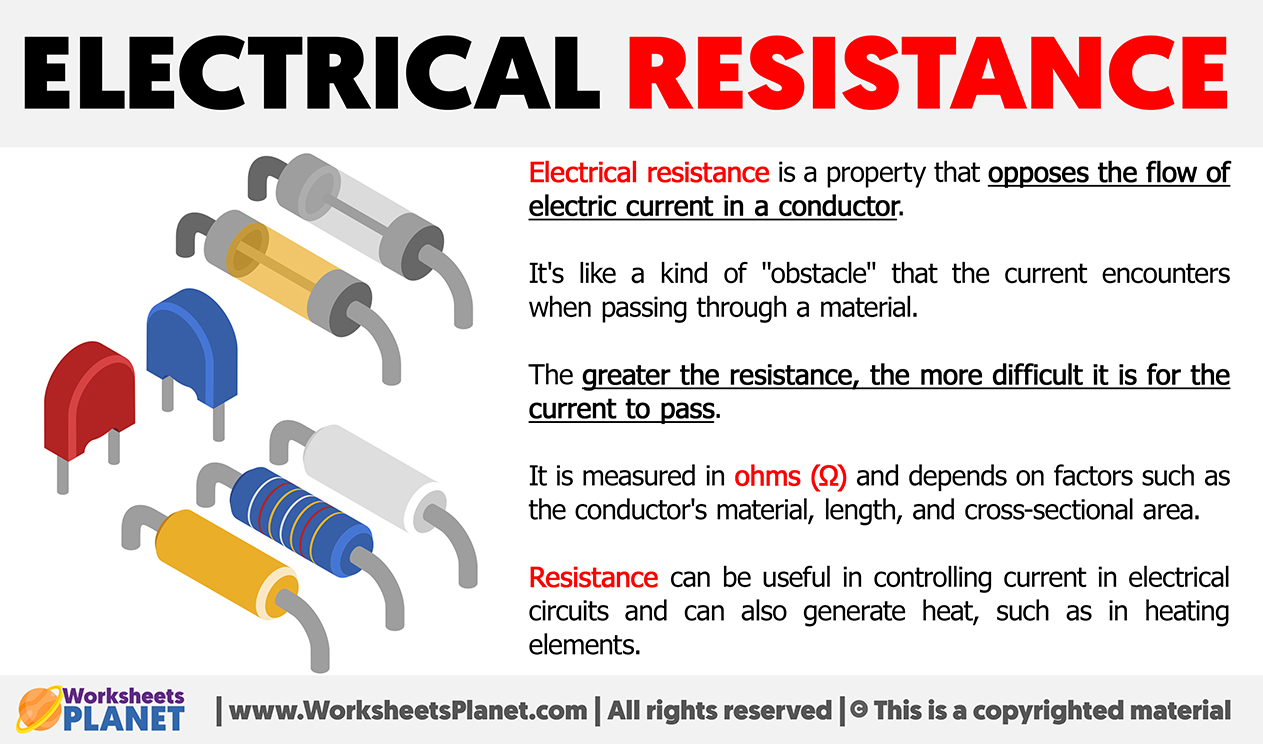Electrical resistance is a property that opposes the flow of electric current in a conductor. It’s like a kind of “obstacle” that the current encounters when passing through a material.
The greater the resistance, the more difficult it is for the current to pass. It is measured in ohms (Ω) and depends on factors such as the conductor’s material, length, and cross-sectional area.
Resistance can be useful in controlling current in electrical circuits and can also generate heat, such as in heating elements.


